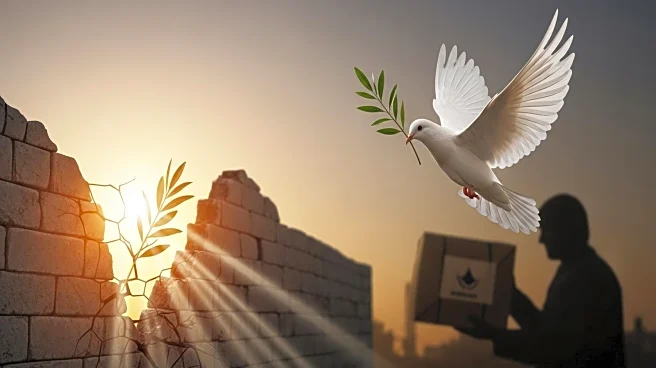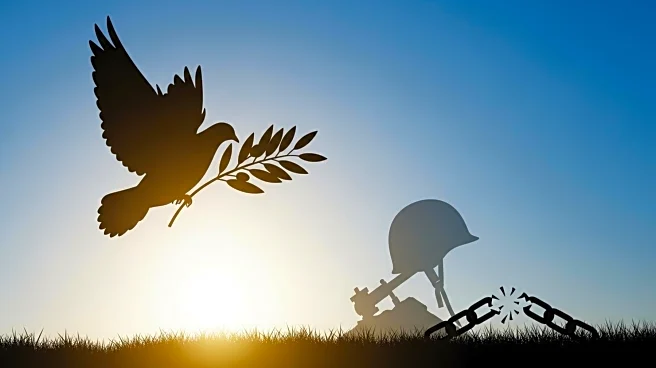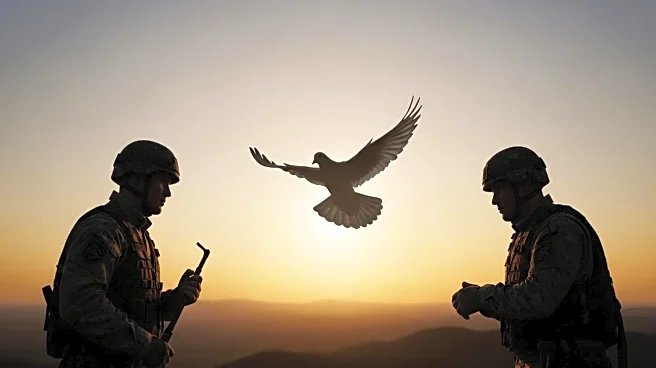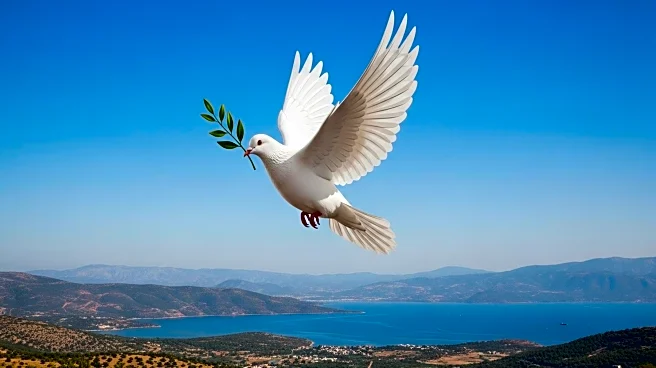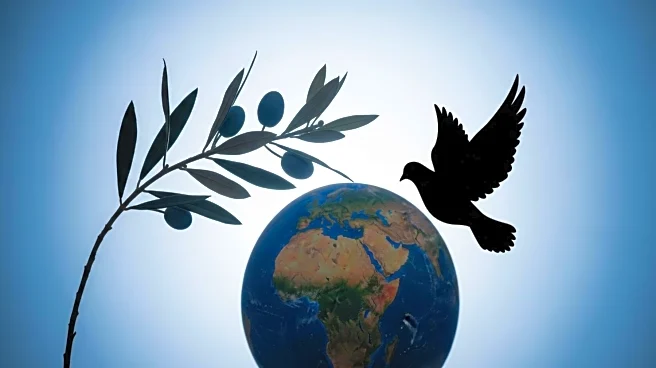What's Happening?
The first phase of President Trump's Gaza peace plan is nearing completion, with Israel and Hamas preparing to exchange hostages and prisoners. The plan involves the release of 20 Israeli hostages in exchange for approximately 2,000 Palestinian prisoners, amid a ceasefire. This development follows a period of intense conflict, with significant humanitarian impacts on both sides. The ceasefire has allowed for increased aid deliveries to Gaza, providing much-needed relief to affected populations.
Why It's Important?
The exchange marks a pivotal moment in efforts to achieve lasting peace in the region. The release of hostages and prisoners is a critical step in building trust and reducing tensions between Israel and Hamas. The ceasefire has enabled humanitarian aid to reach Gaza, addressing urgent needs and alleviating suffering. Successful implementation of the peace plan could lead to broader diplomatic engagements and stability in the region, benefiting both local populations and international stakeholders.
What's Next?
Following the exchange, further diplomatic efforts will focus on maintaining the ceasefire and addressing underlying issues. The international community, including the U.S., will play a key role in supporting ongoing peace initiatives and monitoring compliance. Future phases of the peace plan may involve additional negotiations and agreements to ensure long-term stability. The success of this initiative could influence broader regional dynamics and serve as a model for conflict resolution.
Beyond the Headlines
The peace plan highlights ethical and humanitarian considerations, particularly regarding the treatment of hostages and prisoners. Long-term implications may include shifts in regional alliances and power structures, affecting global geopolitical landscapes. The initiative underscores the importance of diplomatic solutions in addressing complex conflicts and promoting human rights.




